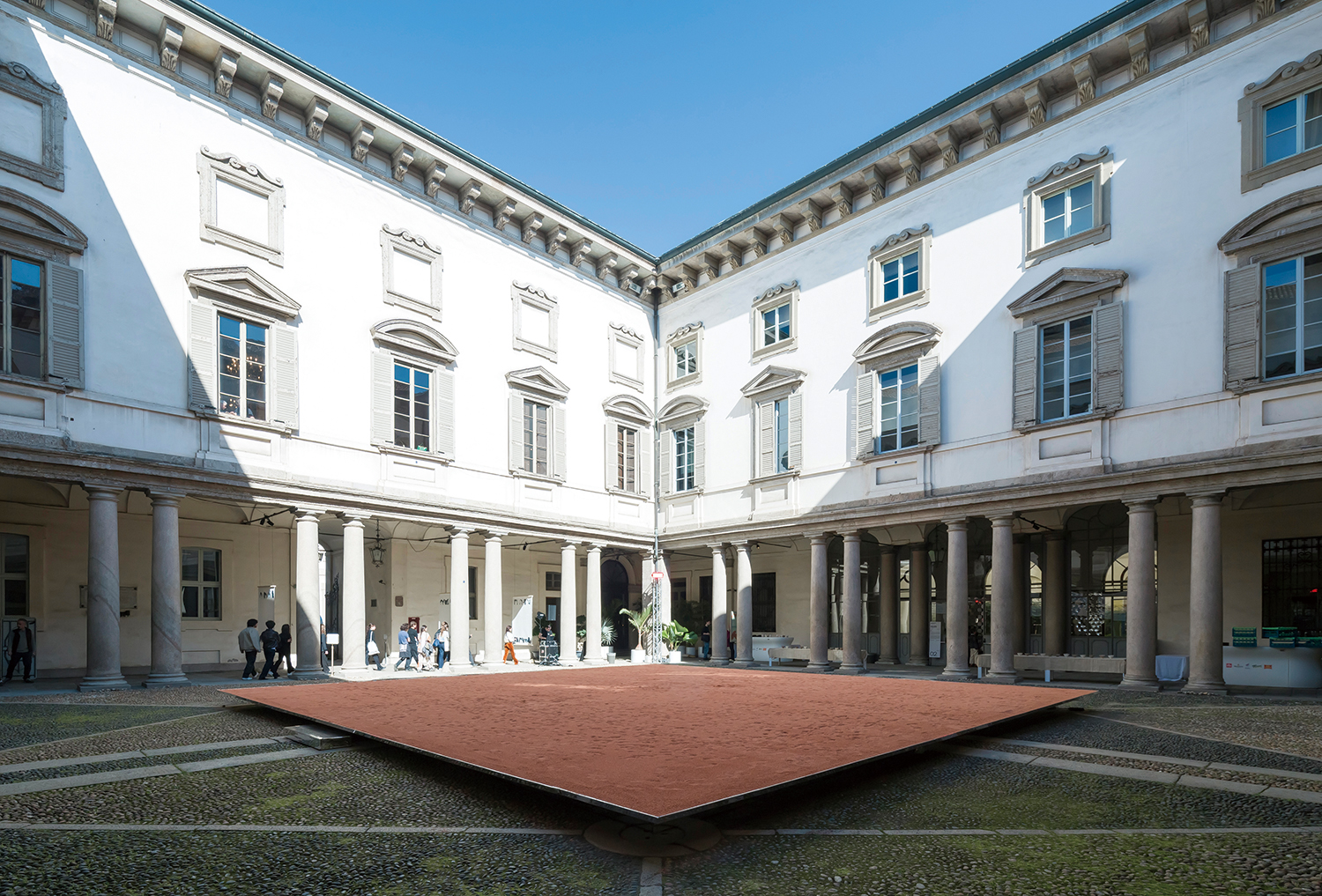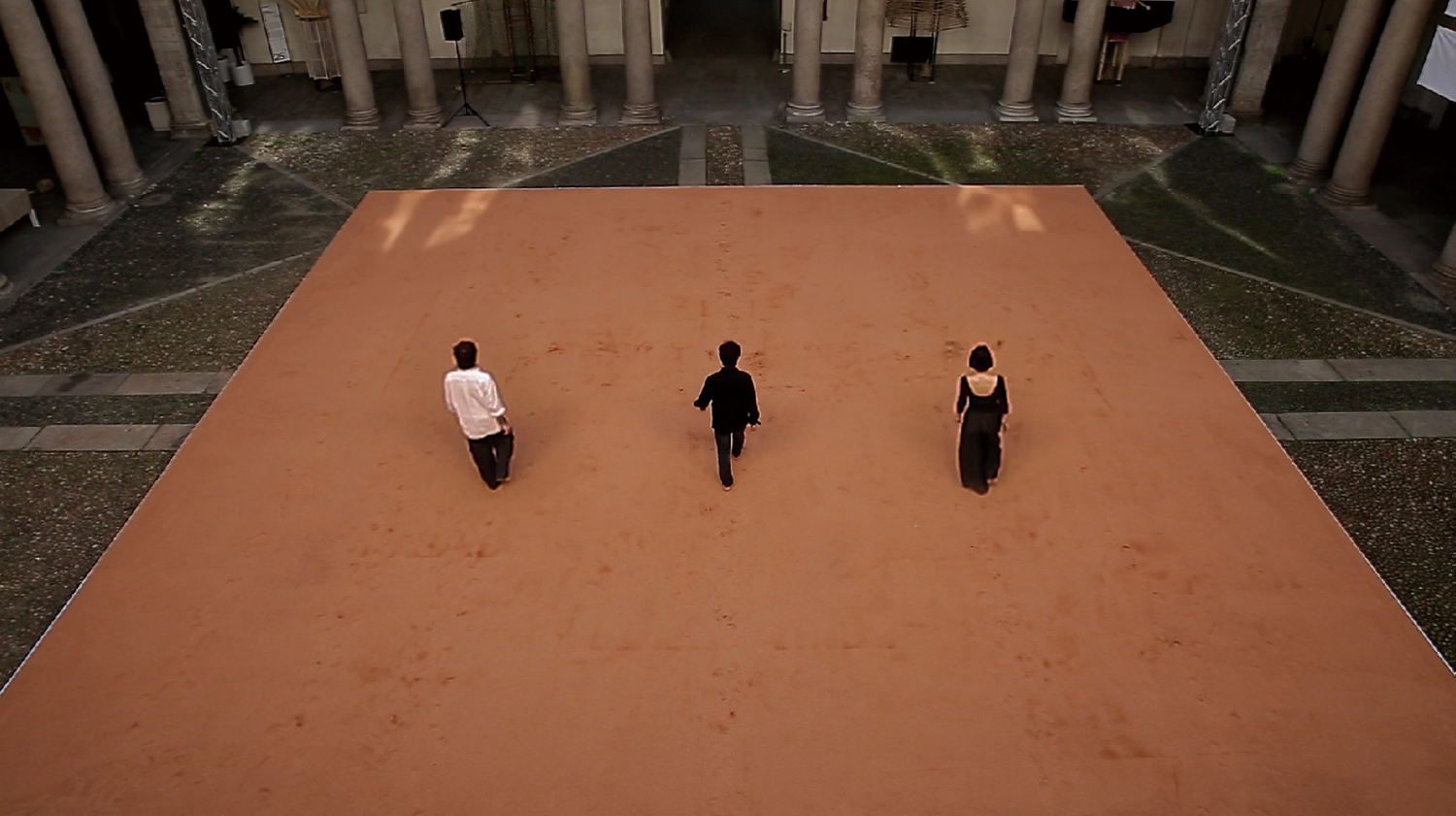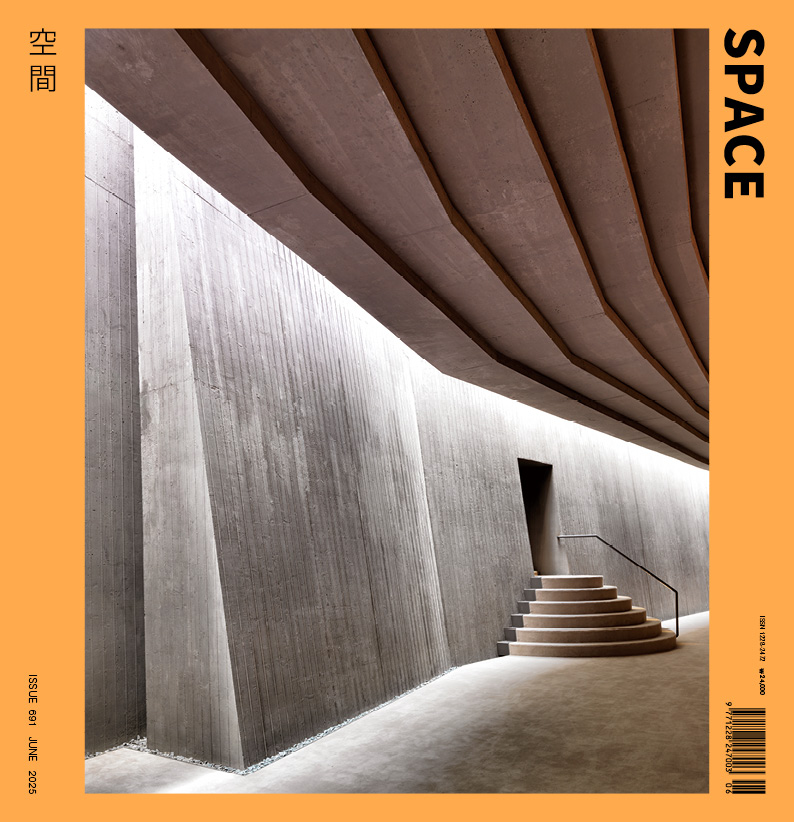SPACE June 2025 (No. 691)

Exhibition view of ‘Nobody Owns the Land: Earth, Forest, Mahk’ ©Sergio Pirrone
Cho Byoungsoo’s exhibition, ‘Nobody Owns the Land: Earth, Forest, Mahk’, was on show from Apr. 6 – 13 at the Cortile d’Onore of the Palazzo Litta, Milan. This exhibition was held as a part of the 2025 Milan Design Week and curated by the architect Cho Byoungsoo, who was invited to take part in ‘MoscaPartners Variations 2025’. The exhibition was centred around the themes of ‘earth, forest, mahk’.
Cho described the exhibition as the realisation of the concept of an Earth House (2009) in Palazzo Litta. Rather than simply placing structures on the ground, the artworks embody the concept of an Earth House, which adapts to and blends into the earth, realising a sustainable architecture (refer to House in the Earth, House towards the Earth, 2017). Cho further noted that he hopes that ‘this exhibition will prompt a moment of reflection on global conflicts surrounding territorial ownership, and further offer a chance to rediscover and heal through the purity of the earth and forests.’
The exhibition unfolds from a large-scale installation at the centre of the courtyard, expanding outwards to a surrounding cloister where paintings and a mak-sabal (the Korean rustic bowl) are displayed. At the heart of the space lies a rectangular platform, elevated about 30cm above ground level, designed to convey a profound sensation of the earth to visitors. The surface of the platform is covered with fragments of Verona marble resembling red clay. It was chosen for its durable qualities, especially in rain. Cho designed the scenario routes of this exhibition so that the viewers can become part of the artworks. The movement of the visitors were carefully choreographed. On the first day, only a single person is allowed to walk on the art installation at a time; the next day, two people are allowed; on the third day, three—gradually increasing until all viewers are eventually free to experience the materiality of the soil. This staged progression goes beyond a simple performance, serving as a metaphor for drawing lines in the land, dividing, and eventually coming together again. The Italian designer and architect Michele De Lucchi, who experienced this artwork, remarked, ‘This work emphasises materiality in the midst of a world overwhelmed by fanciful digitalisation.’ In addition to this art installation, Cho presented over 30 additional works including paintings of the forests and mahk, and mak-sabals.
For the paintings, Cho used Korean traditional pigments such as the nerok (blue-green pigment), seokrok (stone green), seokganju (red ochre) and stone or earth powder, allowing the paints to drip and flow naturally under the force of gravity. Following this exhibition, selected works – including the forest paintings, mahk paintings, and mak-sabal – will be featured in Baroque & Neo-Baroque Festival in Ragusa, Italy, as part of the exhibition ‘Barocco & Neobarocco 2025’, held from June 18 – 22 (with exhibitions extended through June 29). In addition, Cho is also scheduled to give a lecture on June 20, exploring the connections between the unfettered freedom of mak-sabal and the dynamic aesthetics of Baroque. In his talk, he aims to draw both parallels and distinctions between the two seemingly contrasting styles.

A performance of walking on an installation ©Sergio Pirrone

Michele De Lucchi (right) looking at a mak-sabal created by Cho Byoungsoo (left) ©Siho Kim





